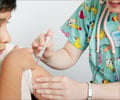Young Australian adults may be at a higher risk of contracting mumps than at any time since mumps vaccines were introduced in the 1970s, immunisation and infectious disease experts have warned.
Transmission of mumps virus has been considerably reduced since the introduction of vaccination, according to Prof Peter McIntyre, Director of the National Centre for Immunisation Research and Surveillance of Vaccine Preventable Diseases in Sydney.However, Prof McIntyre and colleagues said in the latest issue of The Medical Journal of Australia (MJA) that there has been a recent resurgence of mumps in young adults.
“Both the waning of vaccine-acquired immunity and the accumulation of unvaccinated cohorts over time appear to have contributed to an increased susceptibility among young adults,” Prof McIntyre said.
“For now, the priority should be to target young adults, particularly those born during the late 1970s and early 1980s and now aged 25-30 years, for a second dose of MMR (measles-mumps-rubella vaccine).
“In this well travelled age group, an important opportunity for giving a second dose of MMR is at the time before overseas travel.”
MMR vaccine is routinely given to children at the ages of one and four years, but is provided free of charge for all age groups in many Australian jurisdictions.
Advertisement
Three-quarters of those were for people aged 20 or over.
Advertisement
Complications of mumps infection can include inflamed testicles, meningitis, pancreatitis, deafness and spontaneous abortion.
Source-AMA
SRM








